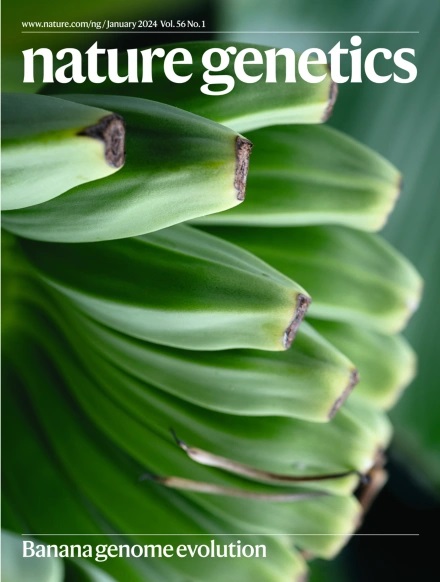The synthetic lethal interaction between CDS1 and CDS2 is a vulnerability in uveal melanoma and across multiple tumor types
IF 29
1区 生物学
Q1 GENETICS & HEREDITY
引用次数: 0
Abstract
Metastatic uveal melanoma is an aggressive disease with limited effective therapeutic options. To comprehensively map monogenic and digenic dependencies, we performed CRISPR–Cas9 screening in ten extensively profiled human uveal melanoma cell line models. Analysis involved genome-wide single-gene and combinatorial paired-gene CRISPR libraries. Among our 76 uveal melanoma-specific essential genes and 105 synthetic lethal gene pairs, we identified and validated the CDP-diacylglycerol synthase 2 gene (CDS2) as a genetic dependency in the context of low CDP-diacylglycerol synthase 1 gene (CDS1) expression. We further demonstrate that CDS1/CDS2 forms a synthetic lethal interaction in vivo and reveal that CDS2 knockout results in the disruption of phosphoinositide synthesis and increased cellular apoptosis and that re-expression of CDS1 rescues this cell fitness defect. We extend our analysis using pan-cancer data, confirming increased CDS2 essentiality in diverse tumor types with low CDS1 expression. Thus, the CDS1/CDS2 axis is a therapeutic target across a range of cancers. This study employs a functional genomic approach to identify a synthetic lethal interaction between CDS1 and CDS2 in uveal melanoma and other cancers, which may represent a potential therapeutic target.


CDS1和CDS2之间的合成致死性相互作用是葡萄膜黑色素瘤和多种肿瘤类型的脆弱性。
转移性葡萄膜黑色素瘤是一种侵袭性疾病,有效的治疗选择有限。为了全面绘制单基因和基因依赖性,我们在10个广泛描述的人类葡萄膜黑色素瘤细胞系模型中进行了CRISPR-Cas9筛选。分析涉及全基因组单基因和组合配对基因CRISPR文库。在我们的76个葡萄膜黑色素瘤特异性必需基因和105个合成致死基因对中,我们鉴定并验证了在低表达的背景下,cdp -二酰基甘油合成酶2基因(CDS2)具有遗传依赖性。我们进一步证明CDS1/CDS2在体内形成一种合成致死相互作用,并揭示CDS2敲除导致磷酸肌肽合成中断和细胞凋亡增加,而CDS1的重新表达挽救了这种细胞适应性缺陷。我们使用泛癌症数据扩展了我们的分析,证实了CDS2在CDS1低表达的多种肿瘤类型中增加的重要性。因此,CDS1/CDS2轴是一系列癌症的治疗靶点。
本文章由计算机程序翻译,如有差异,请以英文原文为准。
求助全文
约1分钟内获得全文
求助全文
来源期刊

Nature genetics
生物-遗传学
CiteScore
43.00
自引率
2.60%
发文量
241
审稿时长
3 months
期刊介绍:
Nature Genetics publishes the very highest quality research in genetics. It encompasses genetic and functional genomic studies on human and plant traits and on other model organisms. Current emphasis is on the genetic basis for common and complex diseases and on the functional mechanism, architecture and evolution of gene networks, studied by experimental perturbation.
Integrative genetic topics comprise, but are not limited to:
-Genes in the pathology of human disease
-Molecular analysis of simple and complex genetic traits
-Cancer genetics
-Agricultural genomics
-Developmental genetics
-Regulatory variation in gene expression
-Strategies and technologies for extracting function from genomic data
-Pharmacological genomics
-Genome evolution
 求助内容:
求助内容: 应助结果提醒方式:
应助结果提醒方式:


